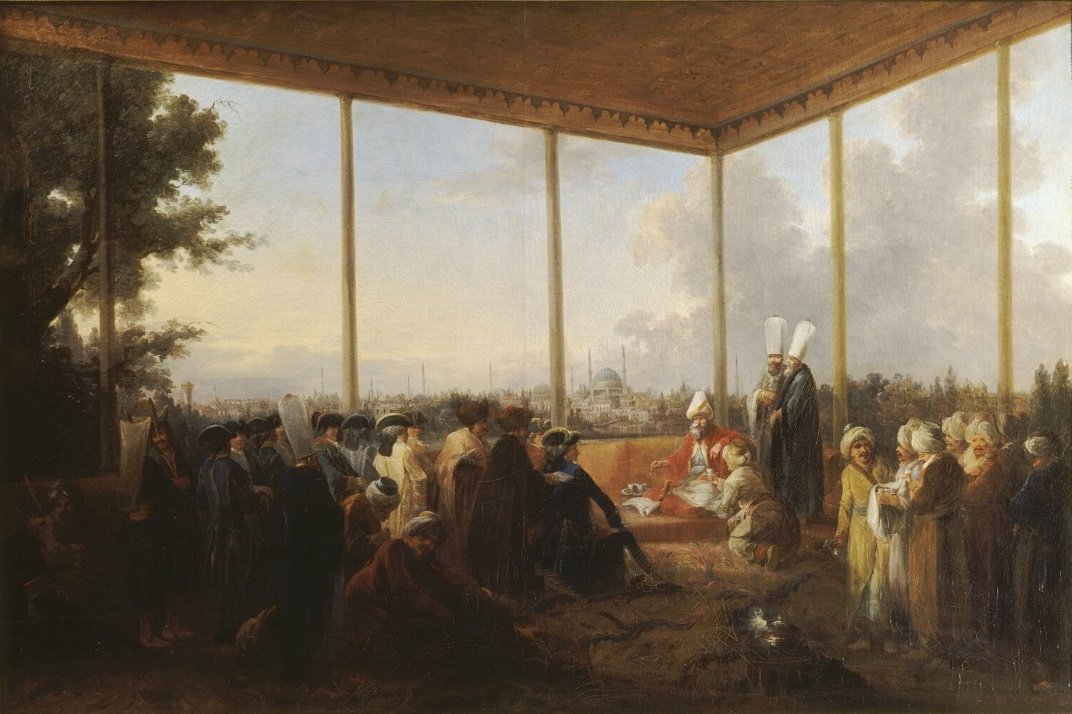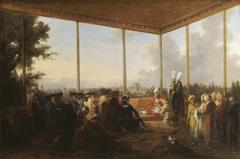
François-Emmanuel Guignard, 1st Count of Saint-Priest: Visiting Hours, Tickets, and History in Lyon, France
Date: 15/06/2025
Introduction
Nestled just outside Lyon, France, the Château de Saint-Priest stands as a testament to the legacy of François-Emmanuel Guignard, 1st Count of Saint-Priest. As a prominent nobleman, diplomat, and statesman of the 18th century, Guignard’s life intersected with pivotal moments in French and European history, especially during the Ancien Régime and the French Revolution. The château and the surrounding commune of Saint-Priest offer a unique opportunity for visitors to immerse themselves in a historical narrative marked by aristocratic splendor, political intrigue, and cultural transformation.
This guide provides essential insights into the château’s classical French architecture, curated exhibits, and landscaped grounds, as well as practical information on visiting hours, ticketing, tours, accessibility, and transportation. It also highlights Lyon’s historical districts, such as Vieux Lyon and Presqu’île, and relevant museums, offering a comprehensive resource for history enthusiasts and cultural explorers alike. For up-to-date visitor information and digital planning tools, consult the Château de Saint-Priest website and the Lyon Tourism Office.
Table of Contents
- Introduction
- About the Château de Saint-Priest
- Visiting Hours and Ticket Information
- Historical Significance of François-Emmanuel Guignard
- Exploring Saint-Priest and Lyon’s Historical Sites
- Key Lyon and Saint-Priest Attractions
- Visitor Tips and Practical Information
- Frequently Asked Questions (FAQ)
- Summary and Recommendations
- References
About the Château de Saint-Priest
Located in the commune of Saint-Priest, just southeast of Lyon, the Château de Saint-Priest is a remarkable example of classical French architecture. The estate, once the seat of the influential Guignard family, features elegantly restored interiors and expansive gardens that reflect the tastes of the 18th-century aristocracy. Visitors can explore stately rooms, period furnishings, and exhibits that illuminate the château’s role in regional and national history.
Highlights:
- Architecture: Classical French style with landscaped gardens.
- Exhibits: Artifacts and displays related to the Saint-Priest family and local history.
- Events: Occasional cultural events and historical reenactments.
Visiting Hours and Ticket Information
Château de Saint-Priest:
- Opening Hours: Tuesday–Sunday, 10:00 AM–6:00 PM. Closed Mondays. Seasonal variations may apply.
- Ticket Prices:
- Adults: €8
- Students/Seniors: €5
- Children under 12: Free
- Guided Tours: Available daily at 11:00 AM and 3:00 PM. Advance reservations recommended.
- Accessibility: Wheelchair accessible; assistance available upon request.
- Parking: On-site parking provided.
For the latest details, visit the official château website.
Historical Significance of François-Emmanuel Guignard
Early Life and Noble Heritage
Born in Grenoble in 1735, François-Emmanuel Guignard was embedded in the French nobility from a young age, admitted as a knight of the Order of Malta at just five. His early military career culminated in the rank of colonel, preparing him for influential roles in diplomacy and governance (theodora.com).
Diplomatic and Political Career
Guignard’s diplomatic service included ambassadorships in Lisbon and Constantinople (Istanbul), where he protected French interests and negotiated vital treaties. He later became Minister of the Interior under King Louis XVI, striving to balance royal authority with revolutionary pressures—an effort that ultimately led to his exile (dayhist.com).
Legacy
- Diplomacy: Instrumental in Franco-Ottoman relations and French foreign policy.
- Family Influence: The Guignard family’s prominence extended across Europe, particularly in Russia.
- Historical Perspective: His memoirs remain valuable for understanding 18th-century European diplomacy (theodora.com).
Exploring Saint-Priest and Lyon’s Historical Sites
The Saint-Priest Connection
The Saint-Priest commune, closely linked to the Guignard family, preserves their legacy through local heritage sites and archives. While no grand monuments are dedicated solely to François-Emmanuel Guignard, visitors can trace his influence in the region’s history and architecture.
Key Sites
- Château de Saint-Priest: The primary site for Guignard’s legacy.
- Church and Cemetery of Saint-Priest: Offers insight into local traditions and the family’s historical importance.
- Loyasse Cemetery (Lyon): Believed to be the final resting place of Saint-Priest.
Lyon’s Historical Districts
- Vieux Lyon (Old Lyon): A UNESCO World Heritage site, rich in Renaissance architecture and home to the social circles frequented by Saint-Priest.
- Presqu’île: Lyon’s political and commercial heart during Guignard’s time, featuring landmarks like Place Bellecour.
For directions, ticketing, and accessibility, refer to the Lyon Tourism Office.
Key Lyon and Saint-Priest Attractions
Château de Saint-Priest
- Location: About 10 km southeast of Lyon’s center. Take the T2 tram (Bel Air stop).
- Features: Elegant gardens, regular events, and interactive exhibits. The park is free; guided tours and special exhibitions may require tickets.
- Accessibility: Most areas are wheelchair accessible.
Place Bellecour
- Significance: Former residence of Saint-Priest; now a central, lively square.
- Access: Metro lines A and D serve the area.
Musée Gadagne
- Focus: Lyon’s history, including the revolutionary era.
- Opening Hours: Wednesday–Sunday, 10:30 AM–6:30 PM.
- Tickets: Approx. €8; free with Lyon City Card (French Moments).
Musée Gallo-Romain de Fourvière
- Features: Gallo-Roman artifacts, including items from the château.
- Opening Hours: Tuesday–Sunday, 10:00 AM–6:00 PM.
- Tickets: Around €4; free for EU residents under 26.
- Accessibility: Funicular from Vieux Lyon.
Local Markets and Events
- Markets: Regular markets in Saint-Priest and Lyon’s Presqu’île.
- Festivals: Notably the Fête des Lumières in December.
Visitor Tips and Practical Information
- Transport: The T2 tram line connects Lyon’s center to Saint-Priest. Buses and regional trains are available; Vélo’V bike-sharing for local travel.
- Accommodation: From budget hotels (Hôtel F1, Quick Palace) to mid-range options (A&H Privilège Hôtel Lyon).
- Dining: Experience Lyonnais cuisine at local bouchons.
- Best Time to Visit: Spring and autumn for mild weather and fewer crowds. Book ahead for December festivals.
- Lyon City Card: Provides access to museums and public transport. Prices range from €29–€59 for 1–4 days (French Moments).
- Cultural Etiquette: Dress smart-casual for museums and restaurants; respect local customs and site regulations.
- Accessibility: Most major sites and museums are wheelchair accessible. Verify in advance for specific venues.
Frequently Asked Questions (FAQ)
Q: Can I buy tickets online for the Château de Saint-Priest?
A: Yes, advance booking is available on the official website.
Q: Are guided tours available for Saint-Priest and Lyon’s historical sites?
A: Yes, both the château and Lyon’s tourist office offer guided tours focusing on the revolutionary era and noble families.
Q: How do I get to Saint-Priest from Lyon?
A: Take the T2 tram to Bel Air station or use buses/regional trains.
Q: Are there dedicated monuments for François-Emmanuel Guignard in Lyon?
A: No, but his influence is evident in the city’s historic districts and museums.
Q: What is the best time to visit for historical tours?
A: Spring and autumn offer the best weather; December’s Fête des Lumières is particularly festive.
Summary and Recommendations
François-Emmanuel Guignard, 1st Count of Saint-Priest, was a pivotal figure in 18th-century France. While Lyon lacks monuments solely dedicated to him, the Château de Saint-Priest and the city’s UNESCO-protected districts offer a rich historical experience. Visitors are encouraged to:
- Explore the château’s architecture and curated exhibits.
- Take guided tours for in-depth historical context.
- Use the Lyon City Card for convenience and savings.
- Enjoy local cuisine and cultural events.
- Stay informed with official tourism websites and the Audiala app for personalized recommendations.
For a comprehensive historical and cultural journey, plan your visit in advance, and take advantage of both the city’s and the château’s resources.
References
- Château de Saint-Priest Official Website
- Lyon Tourism Office
- Musée Gadagne
- French Moments: Top 10 Things to See in Lyon
- theodora.com
- dayhist.com
For further inspiration and updates, download the Audiala app and follow local tourism platforms.

































































